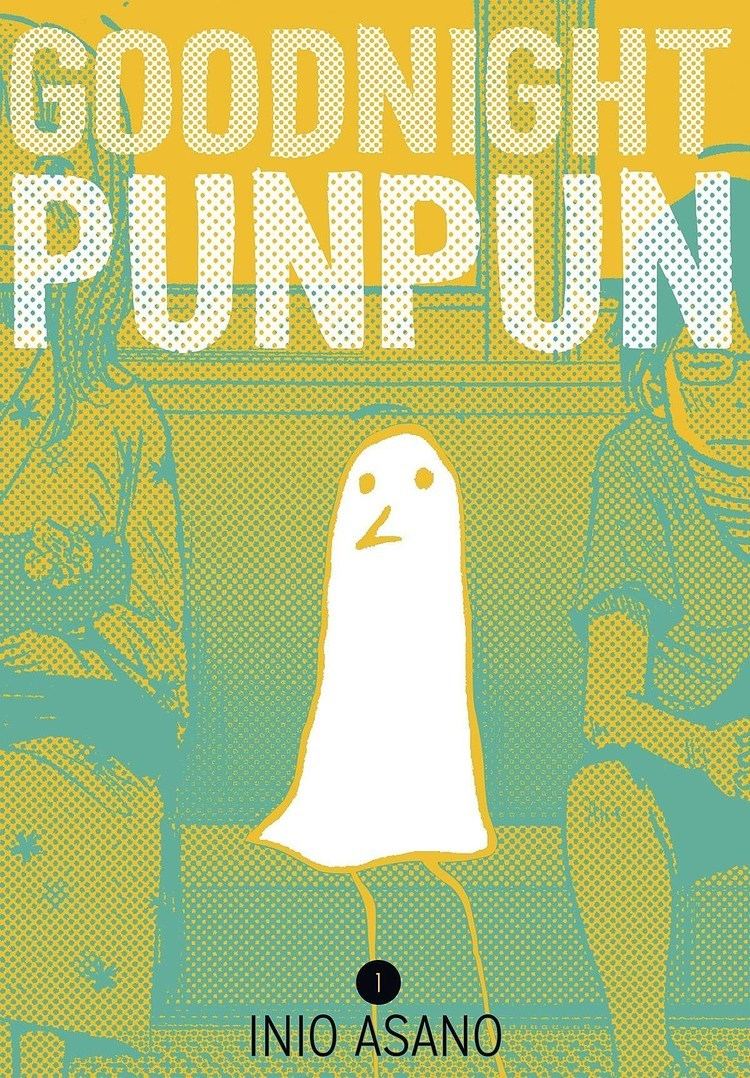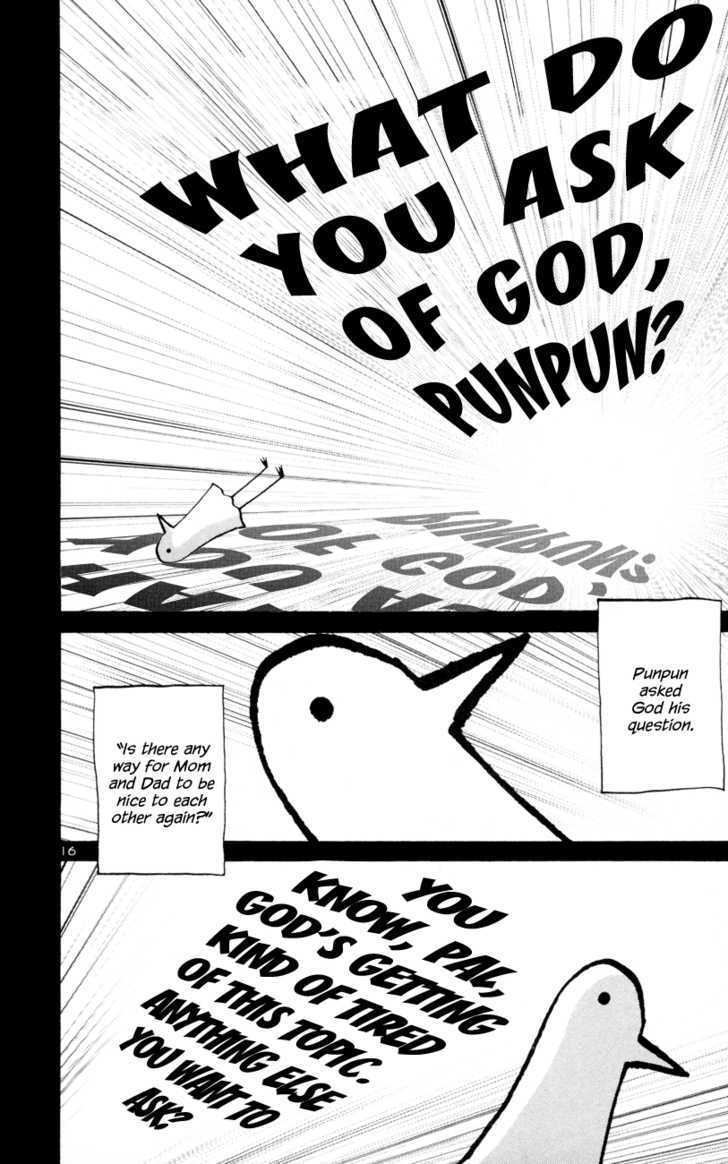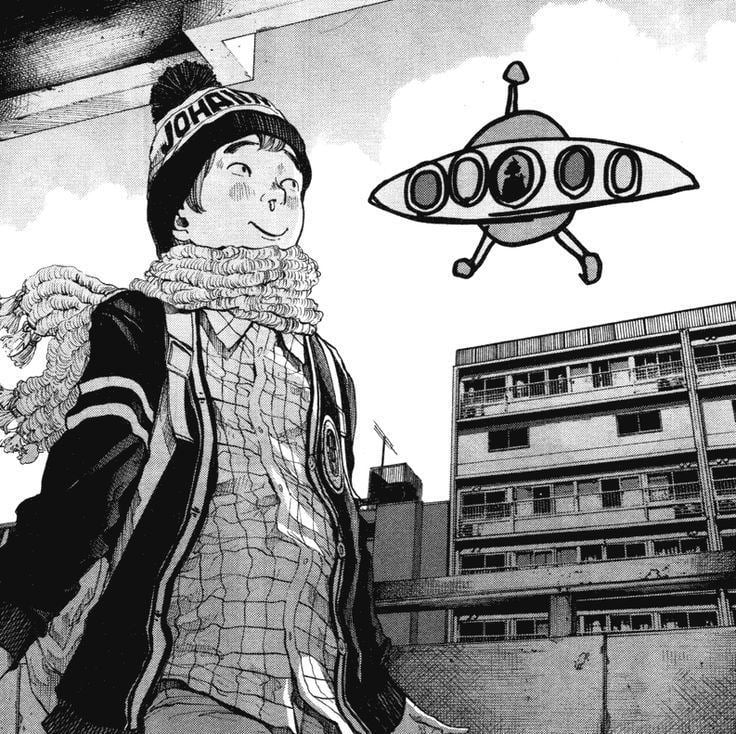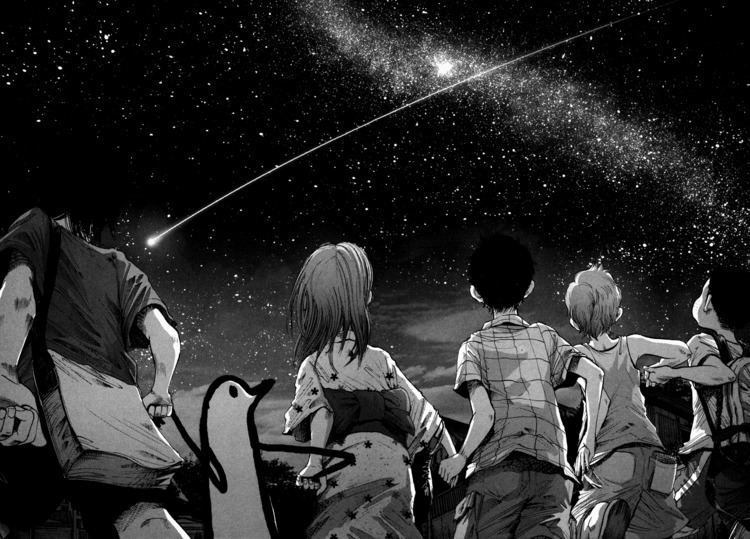 | ||
Original run March 15, 2007 – November 2, 2013 Similar Solanin, Nijigahara Holograph, The Flowers of Evil, 20th Century Boys, I Am a Hero | ||
Goodnight Punpun (おやすみプンプン, Oyasumi Punpun) is a Japanese manga written and illustrated by Inio Asano about Onodera Punpun, a normal child depicted in the form of a bird. The story follows him as he copes with his dysfunctional family and friends, his love interest, his oncoming adolescence and his hyperactive mind. The manga has been licensed in North America by Viz Media.
Contents

Summary

Goodnight Punpun follows the life and experiences of Onodera Punpun, a young boy living in Japan, as well as a few of his friends. The manga follows Punpun as he grows up, splitting the book into around 4 stages of his life: Elementary school, Middle school, High school, and his early 20s.
Characters

Production

Asano announced the manga a year after finishing Solanin. Encouraged by its success, Asano said he was done with "feel-good stories". Despite initial opposition from his editor and publisher, he went through with the manga. Tokie Komuro, the Editor-in-Chief of Monthly Sunday GX, who is a supporter of Asano said that the only reason Asano was able to serialize the manga was because of his good track record and reputation from his earlier works.

When he initially planned the story, Asano wanted to chronicle Punpun's growth spanning ten years over seven volumes. The first half was supposed to be a romance, and the second half when Punpun and Aiko go on the run similar to a road movie. The manga grew to thirteen volumes because Asano wanted to focus on the art and because many characters developed their own side stories. Asano purposely emphasized elements of the first half like its silliness to increase the shock of the second half. With every dark turn in the manga, sales dropped, which Asano regretted because his readers were being alienated. He also felt that he saw his readers as an enemy when he received criticism, which led him to react harsher and cause more backlash. The manga also served as an outlet for Asano's doubts and fears, such as the fear that he might be a victim or perpetrator of murder.

When designing Punpun, Asano wanted to find a balance between making his male protagonist too handsome or too ugly and decided to let readers imagine his face. Asano originally planned to depict all the characters like Punpun's family, but his editor didn't like the idea. Asano utilized photography and computer graphics for the backgrounds of the manga. Outdoor backgrounds were created by taking photographs, converting them to black-and-white, and printing them so his assistants could draw outlines and objects on them. Interiors were created in 3D modeling software, which had the benefit of capturing angles impossible with cameras. When asked why he placed so much emphasis on the backgrounds, Asano said that it allows the drawings to have more impact, especially since characters like Punpun are lacking in dynamism. Asano later came to regret digitally processing his images because he felt he was ruining his pen art.
Themes
Punpun's look as a faceless caricature was meant to help readers identify with Punpun and encourage them to keep reading, both when he was depicted as a bird, and in his later forms. Asano also utilized Punpun's simple look for symbolism, like giving him bull horns to represent Altair, the cowherd star, to symbolize his love triangle as the Summer Triangle with Aiko as Vega and Sachi as Deneb.
Asano described the young Punpun as a fundamentalist, which leads to his regrets and dislike of gray areas later. Asano also ascribed these characteristics to the other characters: "The main characters in Punpun always remain children in the way their purity leads them to fail and become social misfits." At end of the manga, Asano was originally going to make Punpun die while saving a child of a friend, but he felt that it was too "clean" of an ending. He continued the theme of nothing going right for Punpun by making him live and by denying Punpun solitude after Aiko's death by pairing him up with Sachi. In the final chapter, Punpun's experiences are contrasted with those of his childhood friend Harumin to show Punpun from the perspective of a normal person. Harumin sees Punpun surrounded by friends, but in reality nothing went right for him, further emphasizing the theme of failure.
In terms of genres, Asano disliked the labeling of the manga as an utsumanga (depressing manga) or surreal, which he felt pigeonholed the manga. Since the manga was serialized in a seinen magazine, Asano created the manga for readers who could accept immorality rather than see the protagonist as a role model.
Release
The manga was serialized in the Japanese manga magazine Weekly Young Sunday and, later, Big Comic Spirits by Shogakukan from March 15, 2007 to November 2, 2013. Shogakukan compiled the 147 chapters into thirteen volumes between August 3, 2007 and December 27, 2013. Some of these volumes have been sold as limited special editions with extras like: a phone strap, t-shirt, colored pencil set with figures, and lensless glasses. In July 2015, Viz Media announced at Otakon that they licensed the manga and will be releasing the manga in seven omnibus volumes, with the first published on March 15, 2016. The manga has also been published in France by Kana, in Italy by Panini Comics, in Germany by Tokyopop, in Taiwan by Taiwan Tohan, and in Spain by Norma Editorial.
Reception
In 2009, the manga received a Jury Recommendation at the 13th Japan Media Arts Festival Awards.
